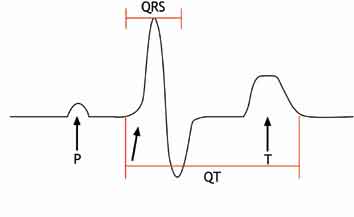How the heart functions, and how it can cause sudden death
In order to understand why sudden death can happen, it helps to understand how the heart functions.
The heart is a specialised muscle and organ that contracts regularly and continuously, pumping blood to the body and the lungs. The pumping action of the heart is caused by a flow of electricity through the heart that repeats itself in a cycle. If this electrical activity is disrupted – for example by a disturbance in the heart’s rhythm known as an ‘arrhythmia’ – it can affect the heart’s ability to pump properly.
Figure 1: How the heart functions electrically
The heart’s natural pacemaker – the SA node – sends out regular electrical impulses from the top chamber (the atrium) causing it to contract and pump blood into the bottom chamber (the ventricle). The electrical impulse is then conducted to the ventricles through a form of ‘junction box’ called the AV node. The impulse spreads into the ventricles, causing the muscle to contract and to pump out the blood. The blood from the right ventricle goes to the lungs, and the blood from the left ventricle goes to the body.
The heart has four main chambers – two at the top (the atria) and two at the bottom (the ventricles). The normal trigger for the heart to contract arises from the heart’s natural pacemaker, the SA node, which is in the top chamber (see the diagram). The SA node sends out regular electrical impulses causing the atrium to contract and to pump blood into the bottom chamber (the ventricle).
The electrical impulse then passes to the ventricles through a form of ‘junction box’ called the AV node (atrio-ventricular node). This electrical impulse spreads into the ventricles, causing the muscle to contract and to pump blood to the lungs and the rest of the body. There are chemicals which circulate in the blood, and which are released by the nerves that regulate the heart, alter the speed of the pacemaker and the force of the pumping action of the ventricles. For example, the chemical adrenaline increases the heart rate and the volume of blood pumped by the heart.
How the heart functions – The electrical activity
The electrical activity of the heart can be detected by doing an ‘electrocardiogram’ (also called an ECG). An ECG recording looks something like the one shown below.

A death is described as sudden when it occurs unexpectedly, spontaneously and/or even dramatically. Some will be unwitnessed; some may occur during sleep or during or just after exercise.
Most sudden deaths are due to a heart condition and are then called sudden cardiac death (SCD). Up to 95 in every 100 sudden cardiac deaths are due to disease that causes an abnormality of the structure of the heart.
The actual mechanism of death is most commonly a serious disturbance of the heart’s rhythm known as a ‘ventricular arrhythmia’ (a disturbance in the heart rhythm in the ventricles) or ‘ventricular tachycardia’ (a rapid heart rate in the ventricles). This can disrupt the ability of the ventricles to pump blood effectively to the lungs and body and can cause a loss of all blood pressure. This is known as a cardiac arrest (not a heart attack). If this problem is not resolved in about two minutes, and if no-one is available to begin resuscitation (CPR), the brain and heart become significantly damaged and death follows quickly.



